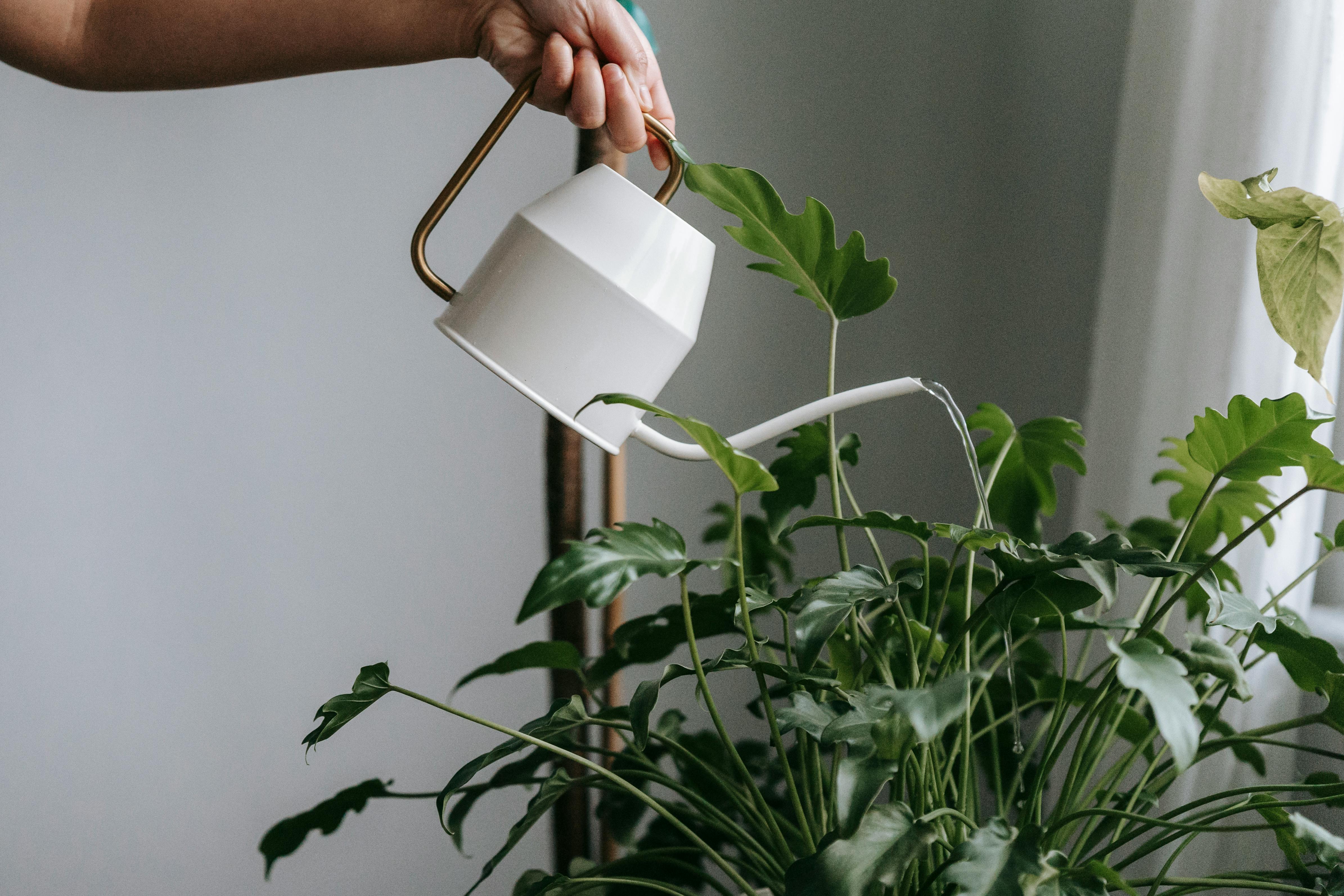Anthurium is a beautiful and exotic flowering plant that is native to tropical regions of South America and the Caribbean. Though it is usually grown in soil, it can also be grown in water. In fact, anthuriums are one of the few plants that thrive in water. Growing anthurium in water can be a great way to add a unique and colorful touch to your home or garden. With just a few simple steps, you can have your own anthuriums growing in water!Yes, anthurium can be grown in water. This is known as hydroponics and it is a great way to grow anthuriums since they require high humidity and regular watering. When growing anthuriums in water, be sure to use clean water that is free of chlorine and other chemicals. Additionally, the water should be changed out every two to three weeks to prevent disease from building up in the container. Growing anthuriums in water also requires fertilizing the plants every few weeks with a liquid fertilizer formulated for aquatic plants.
Anthurium
Anthurium is a tropical flowering plant native to Central and South America. It is commonly known as the flamingo flower or painted tongue due to its brightly colored spathe and spadix. The leaves of the anthurium are often glossy and have a heart-shaped appearance, while the flowers can range in color from white to pink to red. Anthuriums are popular houseplants and make excellent cut flowers, but they are also used in landscaping and as accent plants in gardens. They require bright, indirect sunlight and moist soil for best growth. When properly cared for, anthuriums can bloom year round with proper care.
What Kind of Environment Does an Anthurium Need?
Anthuriums are tropical plants that need a warm, humid environment to thrive. They prefer bright, indirect sunlight and temperatures between 60 and 90 degrees Fahrenheit. They should also be protected from strong winds. When it comes to humidity, anthuriums need a relative humidity of at least 50%. If the air is too dry, the tips of the leaves will start to turn brown and dry out. To increase humidity levels around the plant, mist the leaves periodically with water or place a humidifier nearby.
When it comes to soil, anthuriums prefer well-draining soil with a slightly acidic pH level (between 5.5 and 6.5). The soil should also be rich in organic matter such as peat moss or coconut coir. Water your anthurium deeply but infrequently—about once a week when the top two inches of soil are dry—and avoid overwatering as this can lead to root rot. Finally, fertilize your anthurium every two weeks during the growing season with a balanced liquid fertilizer diluted to half strength.
Overall, anthuriums are beautiful and easy-to-care-for plants that can bring life and color into any home or office space—as long as they’re given the right environment to thrive in!
Does an Anthurium Need Soil to Survive?
Anthuriums are tropical plants native to Central and South America. They come in a variety of colors and shapes, and they can be grown indoors or outdoors. The most important factor in determining whether an anthurium will thrive is its soil. While anthuriums do not need soil to survive, they do need it to grow healthy and strong.
Soil provides essential nutrients for the plant’s growth, such as nitrogen, potassium, and phosphorus. It also helps the plant absorb water and air, which are necessary for healthy root development. Without these elements, the plant can become stressed or weakened over time. Additionally, soil helps anchor the anthurium’s roots in place so they can access water and nutrients more easily.
In addition to providing essential nutrients, soil also helps provide insulation against extreme temperatures. This is especially important if you’re growing your anthurium outdoors or in a greenhouse. Soil helps moderate temperatures around the roots of the plant, which prevents them from becoming too hot or too cold.
There are many types of soils available for growing anthuriums including potting mixes specifically designed for tropical plants like anthuriums. Whatever type of soil you choose to use should be light and well-draining with plenty of organic matter such as peat moss or composted manure mixed into it. This will ensure that your anthurium has all the nutrients it needs to grow healthy and strong.
Overall, while anthuriums can technically survive without soil, it is essential for their health and growth that they have access to proper soil with adequate nutrient content and insulation against extreme temperatures. With a proper potting mix and regular watering/fertilizing schedule, your anthurium should stay healthy and beautiful for years to come!
How Much Water Does an Anthurium Need?
Anthuriums are known for their beautiful, exotic flowers, and these plants need the right amount of water to keep them healthy and thriving. Generally, anthuriums should be watered every 7 to 10 days or when the top inch of soil is dry. During the summer months, it may be necessary to water more frequently if the plant is located in a warm environment. It’s important to avoid overwatering as this can lead to root rot and other problems. When watering, it’s best to water thoroughly so that excess moisture can drain away from the roots. Drip irrigation systems are a great way to ensure that your anthuriums get just the right amount of water.
In addition to regular watering, anthuriums also benefit from occasional misting with a spray bottle or a humidifier. This helps create a humid environment around the plant and can help reduce stress during hot weather. When misting, be sure to avoid getting any foliage wet as this could lead to leaf spot or other diseases.

Can You Grow an Anthurium in Water Alone?
It is possible to grow an anthurium plant in water alone, but it is not ideal. The plant needs soil or a soilless mix to thrive, as it needs access to nutrients and minerals. If you choose to grow your anthurium in water, you should use distilled water that has been treated with a liquid fertilizer for best results. The liquid fertilizer will provide the necessary nutrients for the plant’s growth. You can also add a small amount of aquarium gravel or pebbles to the bottom of the container. This will help anchor the roots and provide some support for the plant.
Anthuriums grown in water alone tend to be weaker than those grown in soil, as they are more susceptible to disease and pests. It is important to change out the water every few days to avoid bacterial buildup, which can damage the roots and lead to problems with rot. Additionally, be sure that your container has drainage holes so that any excess water can escape and not drown the roots of your plant.
If you decide to try growing an anthurium in water alone, it is recommended that you use a shallow dish or bowl as opposed to a deep pot or vase. Shallow containers provide more surface area for oxygen exchange, which will help keep your plant healthy and happy. Also, be sure that you are keeping up with regular fertilization treatments as this will help ensure that your plant gets all of the nutrients it needs for growth.
Advantages of Growing an Anthurium in Water
Growing an anthurium in water has several advantages; first of all, it is a low-maintenance plant that requires no soil. This makes it ideal for those who do not have the time or expertise to maintain a soil-based garden. Furthermore, since it is grown in water, there is no need to worry about pests or disease that could potentially damage the plant. Additionally, since it does not require soil, the maintenance cost associated with growing an anthurium in water is significantly lower than that of a soil-based garden.
Another advantage of growing an anthurium in water is that it requires very little space for its growth and can be easily moved around if needed. Furthermore, the plants can be placed in different containers or tanks which can help create a unique design for any home or office space. Finally, due to its ease of care and relatively low cost, growing an anthurium in water makes a great choice for both beginner and experienced gardeners alike.
Disadvantages of Growing an Anthurium in Water
Despite its many advantages, there are some drawbacks to growing an anthurium in water as well. One major disadvantage is the lack of nutrients available to the plant; since it is not grown in soil, there are fewer nutrients available to feed the roots and leaves which can lead to stunted growth. Additionally, due to its shallow root system and lack of natural protection from pests and diseases, it can be more susceptible to damage than other plants grown in soil. Finally, although growing an anthurium in water might be easier than caring for one planted directly into the ground, it does still require some attention; frequent checking for signs of disease or pests and regular changing of the water is necessary for optimal growth.
What Other Plants Can Be Grown in Water?
Water gardening is becoming increasingly popular as it allows gardeners to grow plants without soil. There are many different plants that can be grown in water, including some of the most common and beloved houseplants. Examples of these plants include philodendrons, ivy, peace lilies, spider plants, and pothos. These are all great options for those who want to start growing their own plants in water.
In addition to these popular houseplants, there are also many other types of plants that can thrive in aquatic environments. Some tropical plants such as anubias, java ferns, and dwarf sagittaria can all be grown in water. These aquatic species have adapted to living without soil and will not only look beautiful but will also help to oxygenate the water and provide a habitat for beneficial bacteria and microorganisms.
Floating aquatic plants such as duckweed and frogbit can be used to create a beautiful surface on top of the water. These types of aquatic plants are often used by gardeners to create a lush green carpet on the surface of their ponds or aquariums. They are also great for providing shade from direct sunlight and filtering algae from the water.
Edible crops including herbs such as basil, mint, dill, chives and parsley can also be grown in water. These herbs require very little maintenance when grown in an aquatic setting and can provide tasty additions to any meal! Microgreens such as kale, radish or arugula can also be easily grown in water with minimal effort required from the gardener.
Overall, there is a wide variety of different types of plants that can be successfully grown in water with minimal care required from gardeners. Whether one is interested in growing edible crops or beautiful aquariums full of vibrant aquatic species – it is possible to have success with this unique type of gardening!

Conclusion
Anthuriums are a great houseplant to have in your home or office. They can bring life and beauty to any room as they come in many shapes and sizes. While it is possible to grow anthuriums in water, it is not recommended as the plant does not thrive in water for extended periods of time. Over-watering an anthurium can lead to root rot, which can cause the leaves and stems to yellow and eventually die. The best way to care for an anthurium is by watering it when the soil is dry and providing adequate drainage. Providing good light, humidity, and temperatures will also help ensure that your anthurium thrives and continues to brighten up your space!
In conclusion, while it may be tempting to try growing anthuriums in water, it is not the ideal way of caring for them. Watering them when the soil is dry, providing adequate drainage, providing good light, humidity, and temperature are all essential elements of proper care. Doing so will ensure that your anthurium will be beautiful for years to come!

